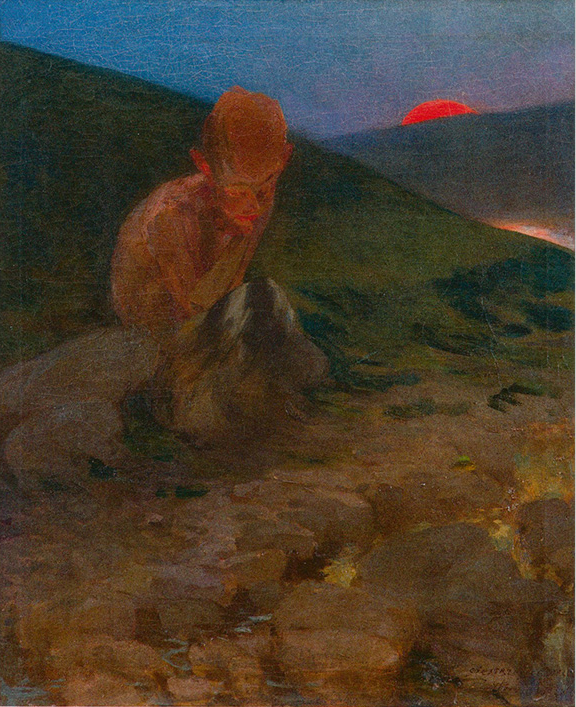
STANISŁAW
BOHUSZ-SIESTRZEŃCEWICZ
(1869–1927)
The realisation of the presentation funded
as part of the programme EU Interreg Lietuva-Polska
Project: LT-PL-5R-389
Faun
The composition is painted intuitively, in a relaxed, sketchy style. Because of the understatement of forms, the whole piece has a character of a painting study. Its colour palette is limited to a few tones which are rising to the top: ochre, green and blue. The colours, broken down by different levels of saturation, permeate one another.
Faun is a painting full of mystery. Its size together with a date and a signature placed by the author suggest that he treated this work as a finished piece. It constitutes a peculiar reinterpretation of Little Faun, which was created about ten years earlier (oil, canvas, 49 x 33 cm). Despite the mythological theme (faun figure: half-human creature with goat’s legs), the composition was painted realistically with attention to detail and proficiency in the craft. The picture captivates with its charm and atmosphere. It inspires sympathy for the melancholic sadness of the little misfit.
But what was the artistic reason for taking up this theme again and casting it in a different form? Neither the XX century trends in painting, nor the stages of artistic development of Stanisław Bohusz-Siestrzeńcewicz explain such a choice. It is left to the viewer’s individual interpretation of the intriguing and disturbing Faun.
The mysterious Faun had appeared in Stanisław Bohusz-Siestrzeńcewicz’s work before. In 1896 he created a cheerful composition Faun and geese, which is a clear trace of his Munich fascination with the oeuvre of a Hungarian, Gyula Benczúr.








